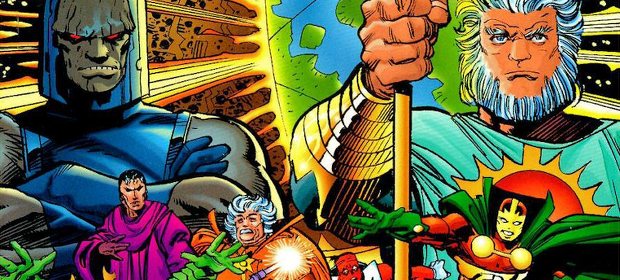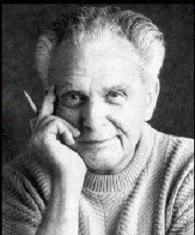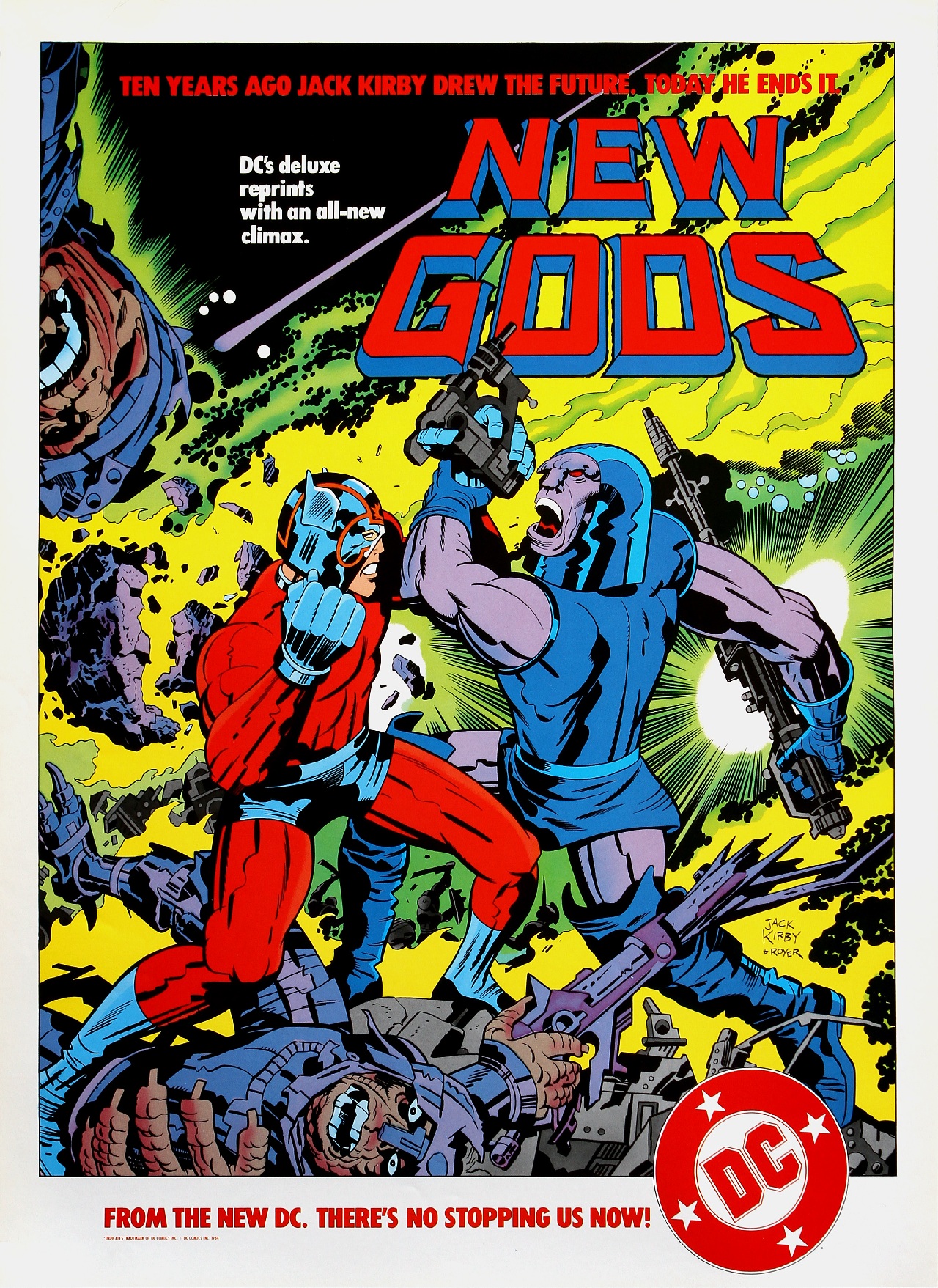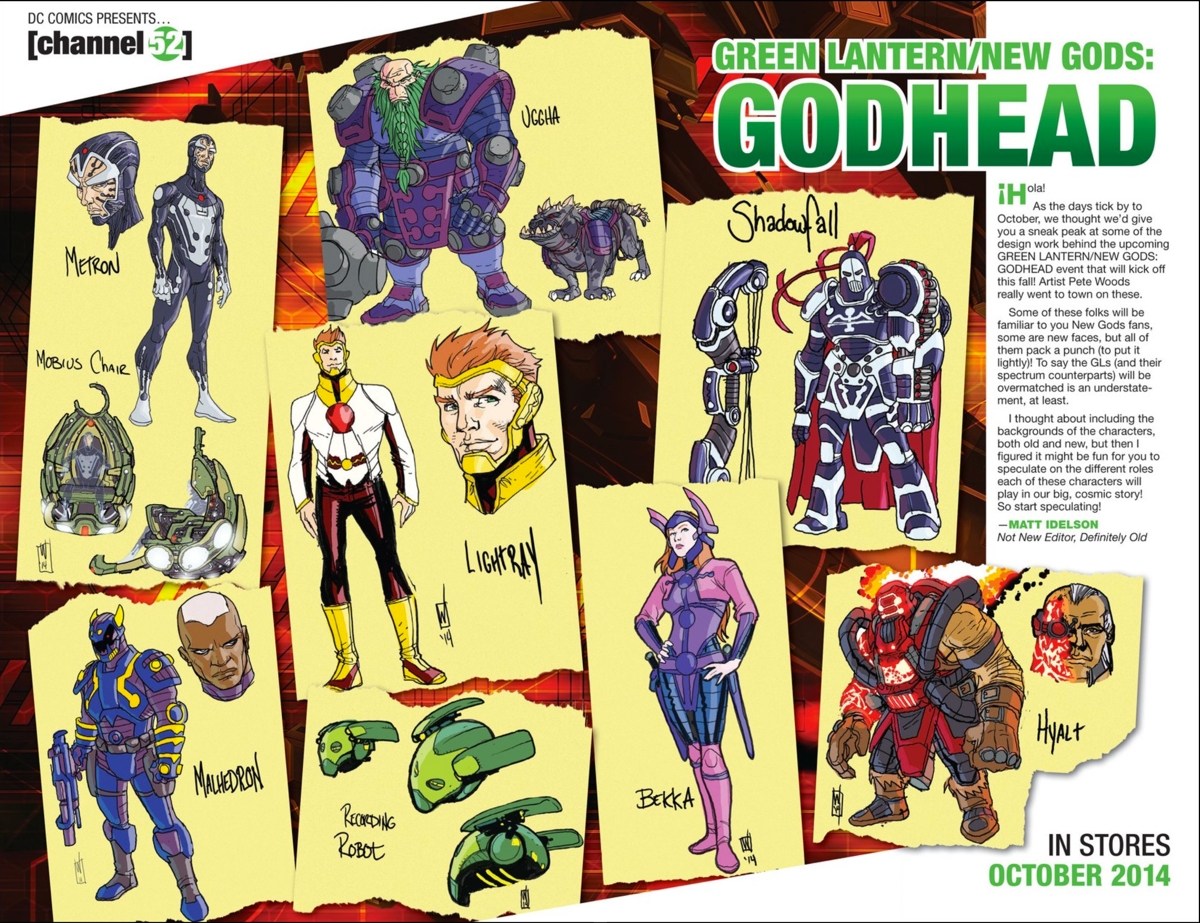On December 30th, 2014, /u/rustbucket2010 asked the following on /r/DCcomics:
What’s the “Fourth World”? I was reading Kingdom Come and it’s mentioned.
The Fourth World is a term used both within the DC Universe to refer to a place/period of time and in ours to refer to a collection of titles written by Jack Kirby. That may sound simple but there’s a huge amount to it! As I enjoy ranting about comic book history, let’s get right down to it.
Here’s a brief history, from the Wikipedia:
Fourth World is a storyline told through a metaseries of interconnecting comic book titles written and drawn by Jack Kirby, and published by DC Comics from 1970 to 1973. Although not marketed under this title originally, the term Fourth World or Jack Kirby’s Fourth World is a retronym that has gained usage in the years since.
Published as the newsstand distribution system for comics began to break down, Jack Kirby foresaw a day when comics would need to find alternate, more legitimate venues for sale. Toward this end, Kirby envisioned a finite series that would be serialized and collected in one tome after the series had concluded. He began the “Fourth World” in Superman’s Pal Jimmy Olsen #133 (Oct. 1970). The three original titles comprising the “Fourth World” were The Forever People, Mister Miracle, and The New Gods.
This quote from Chris Hatfield over on this old blog post sums up well why this was so interesting and historically important:
Structurally, the Fourth World was unprecedented: it introduced several new series, all centered on a single premise, all at once. This approach has since been imitated numerous times within mainstream comics (for example, in Epic’s short-lived Shadowline saga, or more recently in superhero lineups from Malibu, Dark Horse, Milestone, and others). At the time it was a logical extension of the intertextual continuity Kirby and Stan Lee had pioneered at Marvel in the 1960s; yet the Fourth World went Marvel one better, by offering several variations on the same theme simultaneously.
The basic conflict behind the Fourth World (Apokolips vs. New Genesis) perfectly distilled the dualism already inherent in Kirby and Lee’s X-Men (with its good mutant/bad mutant theme). Kirby must have realized that such a conflict was too big, too promising, to be limited to a single book, so he took the next logical step – he launched several new series at once. The consequences of this step are still being felt today.
Originality was also evident in Kirby’s arsenal of ideas and gimmicks. Devices like the Boom Tube, Metron’s Mobius Chair, the Mountain of Judgment, and, best of all, the omnipresent Mother Box, offered vivid symbols of human/machine interdependence. Bizarre beings such as Mantis, the Deep Six, the Bugs, and the Black Racer suggested that Kirby had been breeding characters in the back of his mind for years. Settings such as Armagetto, Supertown, the Habitat, and Zoomway offer breathtaking vistas and endless narrative possibilities, while the cosmic mystery of the Source, and the overarching menace of Anti-Life, gave the story a weird, mythic urgency.
Fourth world? what about one through three?
 Before the Fourth World there were three previous ‘worlds’ and the Old Gods. These are the one who came before the New Gods (both groups had amazing super powers in all areas other than creative naming) so here’s the timeline breakdown from from the DC Wikia:
Before the Fourth World there were three previous ‘worlds’ and the Old Gods. These are the one who came before the New Gods (both groups had amazing super powers in all areas other than creative naming) so here’s the timeline breakdown from from the DC Wikia:
The Old Gods of the First World were an ancient race, whose destruction led the way for the Gods of Earth and other planets as well as the Fourth World of Apokolips and New Genesis.
Origins
Around 18 billion years ago, the Old Gods originated from God World (also known as Asgard or Urgrund) during the “First World”. After 3 billion years later, the “First World” slowly segued into the “Second World” as the humanoid lifeforms on God World attained godhood, thus becoming the Old Gods, in which these beings reached a peak of immense power and ushered a golden age of cultural and scientific advancement.
Destruction
After 10 billion years of this golden age, God World fell into war. At the heart of this conflict was Lokee, god of mischief and bastard son of the chief god Wotan, who became the first god of evil. The conflict between the forces of good and evil escalated until Ragnarok came that saw God World being torn asunder in a great explosion where the gods perished.
Legacy
The energy unleashed by the explosion of the God World spread across the universe, generating what later became known as the Godwave which seeded worlds with the potential to eventually bring forth gods of their own. Such a world was Earth, which produced its first own such gods 35,000 years ago. This was the beginning of the “Third World”.
The remnants of God World would eventually create two separate planets: Apokolips and New Genesis. The denizens of the planets would mirror that of the Old Gods, but would be split in terms of moral alignment. New Genesis became dedicated to peace and goodness. Apokolips developed into a cruel, warlike culture. The “Fourth World” began when these New Gods attained godhood and repeated the history of the Old Gods as New Genesis and Apokolips waged war against each other, causing the hostilities to remain to the present day.
So it’s both an in world and real world term?
Yep! Over the years the term hasn’t just been used by all of us to refer to the characters but by themselves too. The actions that created the New Gods (and Darkseid et al) was the dawn of the Fourth World, with the Old Gods that proceeded them belonging to the previous ‘world’. It’s used both in this sense in the same way we use ‘Age’ – as in the Dark Ages, Middle Ages etc – and to refer to places as well, specifically New Genesis, but also sometimes including Apokolips.
So yes, Fourth World can both mean the collection of characters and an age within the fictional timeline of the DC Universe.
What was it all about?
Kirby created, wrote and drew a bunch of amazing new mythology:
When Jack Kirby returned to working for DC Comics in the 1970s, he introduced what would become known as the Fourth World concept. He created a science-fiction based mythology revolving around ancient space deities known as the New Gods. Similar to the gods of Earth lore, the New Gods were larger than life, possessing fantastic powers, which they used in a never-ending struggle between good and evil. The original Fourth World concept was intended as part of a finite epic saga, but for reasons that have never been satisfactorily explained, was never brought to its ultimate fruition.
“The Fourth World” dealt with the battle between good and evil as represented by the worlds of New Genesis and Apokolips. Darkseid, the evil lord of Apokolips, seeks the Anti-Life Equation which will allow him to control the thoughts of all living beings. Opposing him is Orion, his son raised by Highfather and his enemies on New Genesis.
Other characters caught in the deadly battle included the Forever People, an extension of the kid gang concept from the 1940s with a group of adolescents adventuring without an adult supervisor; Mister Miracle, a native of New Genesis raised on Apokolips who triumphed over a torturous childhood to become the world’s greatest escape artist; and Lightray, the heroic warrior of New Genesis. Their adventures would take them to Earth where the war continued.
 As you can see, while the story started out far away and removed from the current goings on of the main DC Earth at the time, this soon changed and it still took place in the main universe. There’s a reason this becomes so complicated and I’ll explain it in a bit. Here’s some more evidence of the crossover:
As you can see, while the story started out far away and removed from the current goings on of the main DC Earth at the time, this soon changed and it still took place in the main universe. There’s a reason this becomes so complicated and I’ll explain it in a bit. Here’s some more evidence of the crossover:
The Fourth World characters reappeared in various titles. In 1976, the New Gods were featured in the last issue of 1st Issue Special. The New Gods series relaunched in July 1977, and … picked up where the storyline of that issue left off. Although the title remained “The New Gods” in the indicia and retained its original numbering, launching with #12, the covers used the title “The Return of the New Gods”
Mister Miracle teamed-up with Batman three times in The Brave and the Bold and the Mister Miracle series was revived in September 1977 by Steve Englehart and Marshall Rogers … Mister Miracle teamed with Superman in DC Comics Presents #12 (Aug. 1979)and the New Gods met the Justice League of America and the Justice Society of America in Justice League of America #183–185 (Oct–Dec 1980). “The Great Darkness Saga” storyline in Legion of Super-Heroes vol. 2 featured that team battling Darkseid
1984 Reprint Series
In 1984, DC Comics reprinted Jack Kirby’s original 11 issues of The New Gods in a six-issue limited series. The first five issues each reprinted two consecutive issues of the original series. The mini-series’ final issue was originally intended to include a reprint of New Gods vol. 1 #11 and a new 24-page story which would conclude the series and end with both Darkseid and Orion dead. DC editors prevented Kirby from using his original intended ending. Kirby instead turned in a one-off story called “On the Road to Armagetto” which was rejected as well, due to the fact that it did not contain a definitive ending to the series. A 48-page new story called “Even Gods Must Die” was published in the sixth issue of the reprint series instead, which in turn served as a prologue for the upcoming The Hunger Dogs graphic novel, which DC editors greenlighted in order to conclude the series.
The Hunger Dogs was designed to give an ending to the story of the New Gods, while fulfilling editorial mandates that the New Gods would be kept alive in order to ensure future use of the characters by later writers. It incorporated several pages from the unpublished “On the Road to Armagetto” story and brought Kirby’s New Gods series to a close as the final battle between Orion and Darkseid is averted when the “hunger dogs”, the tortured citizens of Apokolips, finally overthrow Darkseid and his regime, forcing Darkseid and his allies into exile.
OK, so what have they been up to since?
Concurrent with DC’s New Gods reprint series in 1984, Kirby worked on two Super Powers comic book limited series for DC Comics in which he continued the Fourth World characters and mythology.
 There was a bunch of other series featuring the characters and random appearances over the years from 1988 to 2002 – and I could go on at length about all this as contributor to this blog /u/dmull387 reminded me of here on Reddit, but that will have to come in a more complete What’s the deal with the New Gods? post or this would bloom out of control – and then you get the more recent stuff:
There was a bunch of other series featuring the characters and random appearances over the years from 1988 to 2002 – and I could go on at length about all this as contributor to this blog /u/dmull387 reminded me of here on Reddit, but that will have to come in a more complete What’s the deal with the New Gods? post or this would bloom out of control – and then you get the more recent stuff:
Writer Grant Morrison used some of the Fourth World mythology in various titles he worked on, including his run on JLA, with Orion and Big Barda becoming members and more recently in the Seven Soldiers metaseries, in which the New Gods, especially Mister Miracle, played a major role.
The Death of the New Gods limited series (October 2007 – April 2008) was written and drawn by Jim Starlin. Final Crisis brought the Fourth World to an end and brought about the dawn of the Fifth as Darkseid was forevermore destroyed and the heroic new Gods (sans Scott Free and Orion) are reborn and made guardians of Earth-51, home of Kamandi and the Great Disaster.
See, that then didn’t matter too much because then we got the Flashpoint incident and then full reboot which lead to the New 52, which has seen the Fourth World characters showing up a bunch, with Orion showing up in Wonder Woman and even more:
With the reboot of the DC Universe following Flashpoint, the deaths of the New Gods and Darkseid have been removed from canon and the characters are still active. In particular, Darkseid and his uncle Steppenwolf and their attacks on the main DC Universe and Earth 2 play a major role in the rise of the superheroes: the Earth 2 versions of Superman, Batman, and Wonder Woman die fighting Steppenwolf while the Earth 1 Justice League form specifically to fight Darkseid and thwart his invasion of Earth.
A New 52 version of the Forever People debuted in the Infinity Man and the Forever People series. Serifan is now Serafina, Vykin’s sister, and Beautiful Dreamer has been renamed Dreamer Beautiful.
Of course, if you’re up to date, there is all the current stuff in the Godhead story arc which is running across all the Lantern books and shows them battling Highfather and the armies of New Genesis.
Now, in the post-Flashpoint continuity both these places exist outside the Multiverse so unlike other planets where each universe might have a different copy, there is only one Apokolips and one New Genesis only one of each of the Gods that reside there. Complicating this seems to be the idea, appearing in Grant Morrison’s Multiversity series that there are both the versions out of the universe and ‘aspect’ of the New Gods, including Darkseid that exist inside the various realities of the multiverse. This has not been completely explained yet, but I’ll update this if and when it is.
As for the oft mentioned pre-Flashpoint idea that Earth is the destined site for the ‘Fifth World’, something we saw come true in Final Crisis, I don’t believe this has been expressly stated as part of the New 52 but Highfather has waxed lyrical in Godhead about the importance of Earth…
So, there you have it – I could go on and on and on about any of these characters but, ironically, I’m nearly out of characters to write with!
Hope this was helpful :)





